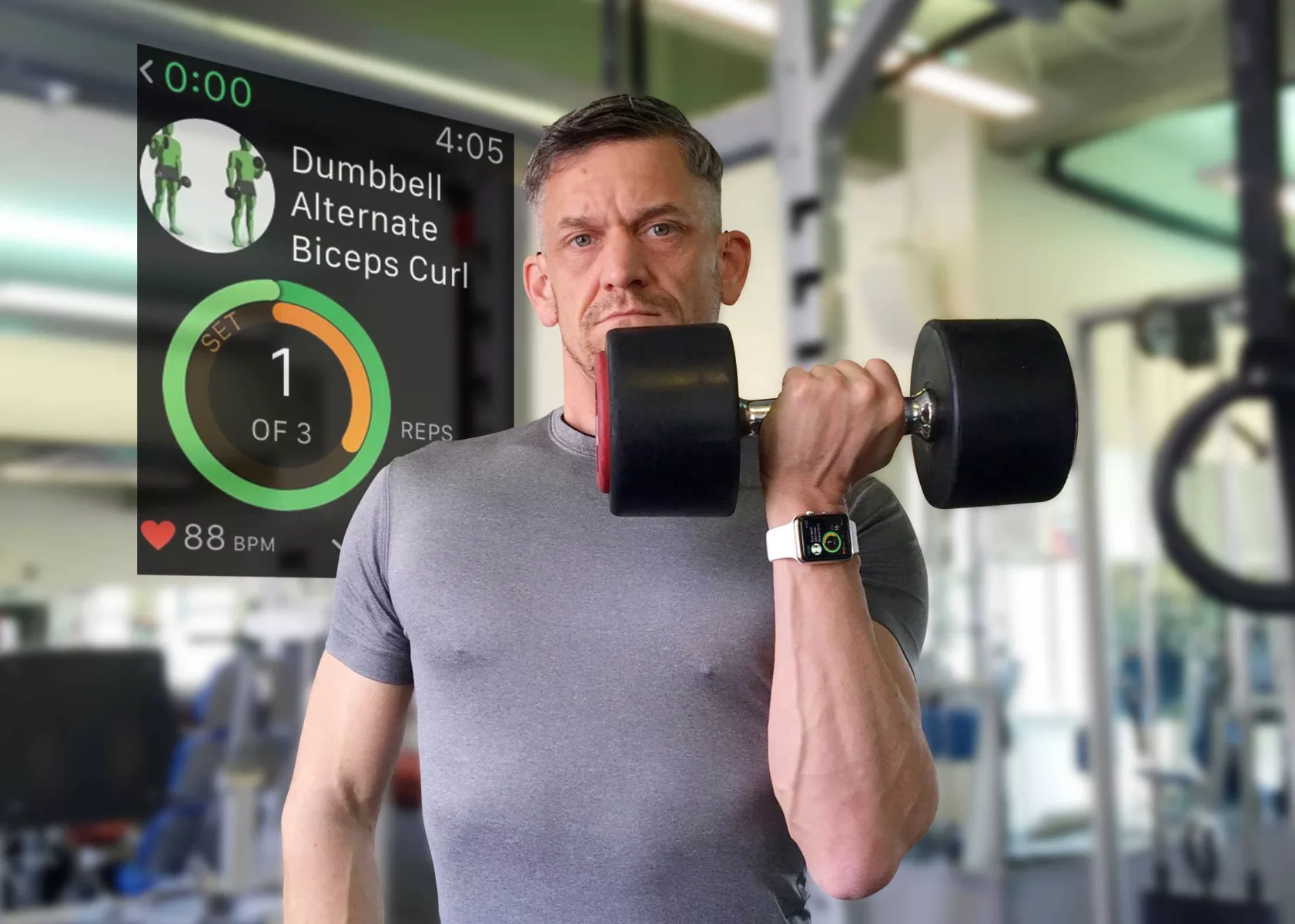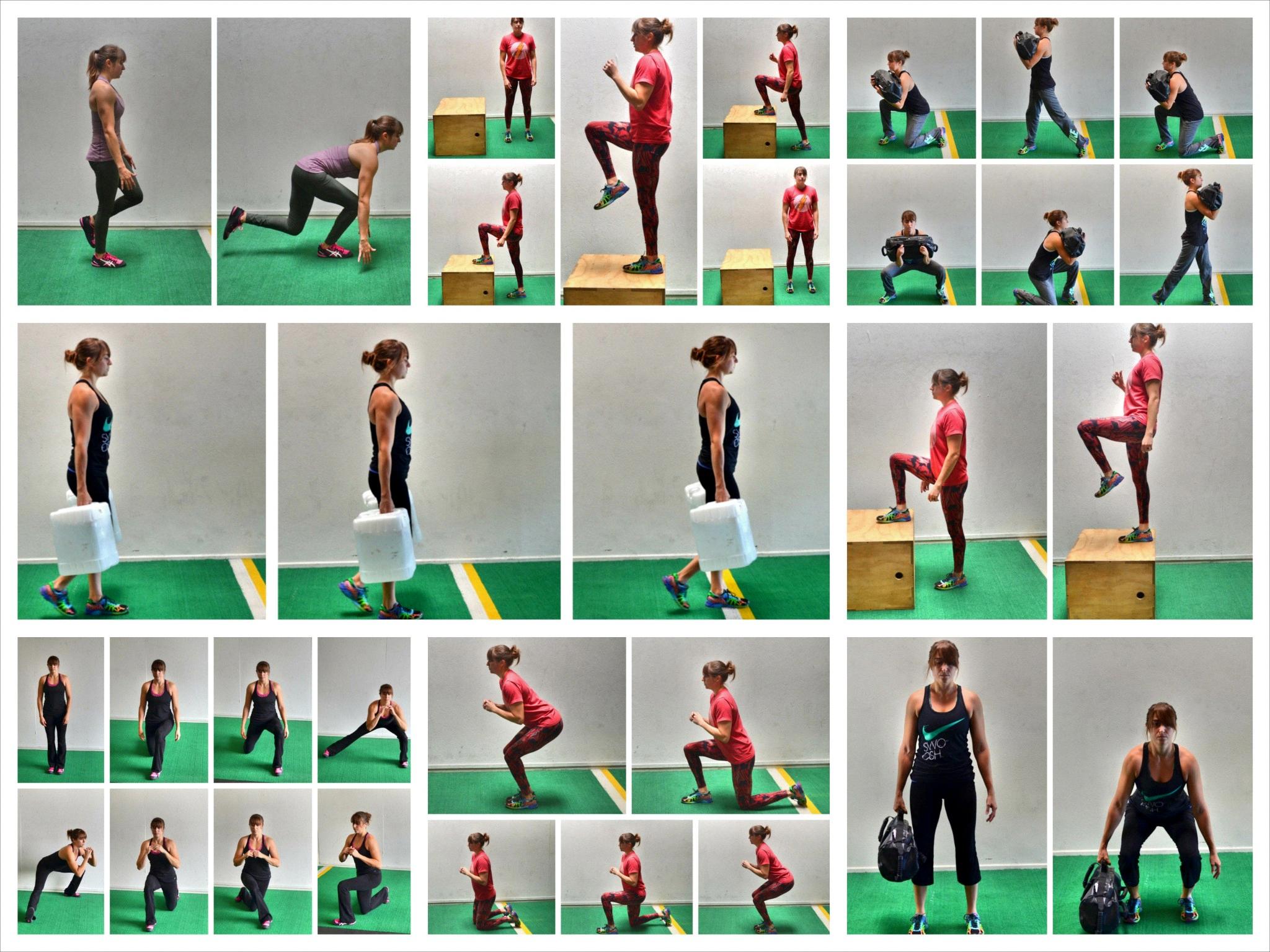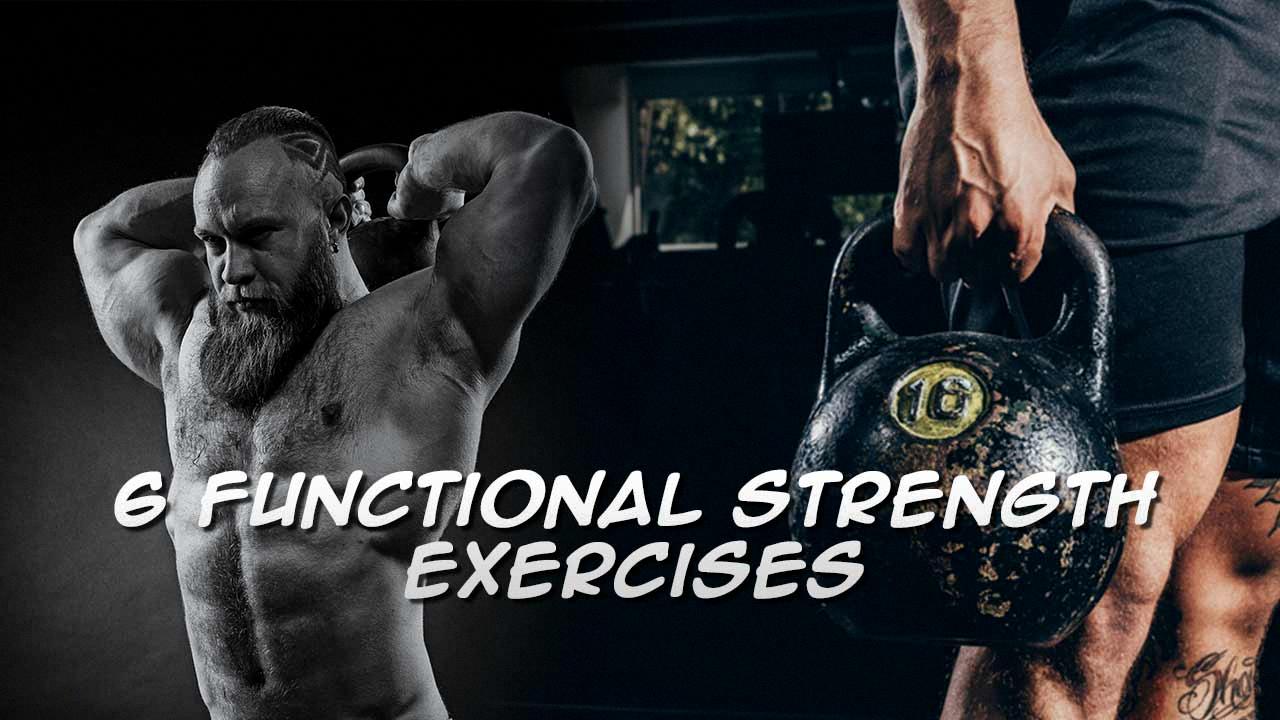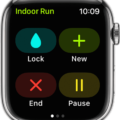Functional strength training is an exercise style that focuses on improving the performance of everyday activities. This type of training focuses on increasing strength, power, and mobility, while also emphasizing proper form and technique. By strengthening the body in a way that directly relates to everyday tasks, functional strength training has many benefits for physical and mental health.
Functional strength training is designed to improve one’s ability to perform everyday tasks. By improving overall athleticism and strengthening the core muscles, functional strength training can help to reduce the risk of injury whie performing daily activities. The movements used in functional strength training are often multi-joint exercises that involve multiple muscle groups. Examples of functional exercises include squats, lunges, pull-ups, push-ups, and more.
In addition to benefiting physical health, functional strength training can have psychological benefits as well. By helping to improve focus and concentration skills, this type of exercise can help with stress management and mental clarity. It can also foster self-confidence by improving posture and body image.
The Apple Watch has made it easier than ever to track your progress with functional strength training. With the built-in Workout app, you can set goals for yourself based on time or calories burned durig your workout session. You can also easily monitor your heart rate while you exercise so you know when to push yourself harder or back off a bit if needed. Additionally, you can use the Activity Rings feature to view a breakdown of how much time was spent exercising each day or week so you can ensure that you’re staying consistent with your workouts over time.
Overall, functional strength training is an excellent form of exercise that offers many physical and mental health benefits. By utilizing the features available on the Apple Watch, you can easily keep track of your progress as you work towrds achieving your fitness goals!

The Benefits of Functional Strength Training on the Apple Watch
Functional strength training on the Apple Watch is a form of exercise that uses movements that are designed to mimic everyday activities. It focuses on strengthening the muscles used in daily activities, such as walking, running, lifting, and carrying objects. The exercises can be done using light weights or even with no equipment at all. This type of strength training is beneficial becase it helps to improve balance, stability, and endurance while increasing overall fitness. It can also help to reduce the risk of injury by strengthening muscles that are used in everyday activities. With the updates made to the Apple Watch in 2020, users have access to a range of different functional strength training workouts. These workouts present users with challenging and varied exercises aimed at developing muscle power and endurance. They incorporate a range of movements such as squats, lunges, push-ups, planks, and more. With these workouts you can vary the intensity level and duration throughout your session so that you challenge yourself while still remaining safe from injury.

Source: redefiningstrength.com
The Difference Between Functional and Traditional Strength Training on Apple Watch
Functional strength training is a type of exercise that focuses on movements, rather than individual muscle groups. It involves performing dynamic strength sequences for the upper body, lower body or full body, using small equipment such as dumbbells, resistance bands and medicine balls, or with no equipment at all. Traditional strength training is a more traditional form of weightlifting-type workouts that focus on targeting and isolating specific muscle groups.
On Apple Watch, functional strength training is designed to replicate real-world activities and movements that are used in everyday life. This type of exercise engages your core muscles and helps to improve balance, coordination and stability while increasing overall strength. Traditional strength training is designed to help you build muscle size, definition and power throuh exercises such as bench presses, squats and deadlifts.
Overall, functional strength training is a great way to build overall fitness on your Apple Watch while traditional strength training will help you build specific muscle groups for increased power and definition.
Adding Functional Strength Training to Apple Watch
Adding strength training to your Apple Watch is easy and straightforward. First, open the Workout app on your Apple Watch. Scroll down using the Digital Crown and tap on Add Workout. Scroll through the available options and tap on Strength Training. The Workouts app will then run on auto-pilot, so you don’t need to make any changes while you are exercising. After you have completed your strength training session, the data will be synced with the Health app or other third-party apps that you have connected to your Apple Watch.
Accuracy of Apple Watch Functional Training
No, the Apple Watch is not accurately measuring functional training. While it can provide some useful information about your activity levels and heart rate, it is not reliable for tracking the intensity of functional training exercises. This is because the Apple Watch lacks features like a 3-axis accelerometer, wich is needed to accurately measure the range of motion, speed and acceleration during functional exercises. It also doesn’t have a barometer or altimeter to measure changes in elevation or measure altitude during a workout. Furthermore, it does not have features like a gyroscope or magnetometer to accurately track movements along three axes during an exercise. Therefore, while the Apple Watch may be useful for tracking overall activity levels, it is not reliable for tracking the exact intensity of functional training exercises.
Functional Strength Training: What Is It?
Functional strength training is an exercise program designed to improve overall strength and physical performance by focusing on movements that are used in daily life. It emphasizes core stability, balance, and coordination, as well as strength and mobility. Functional strength training uses a variety of exercises such as resistance training with free weights, bodyweight exercises, plyometrics (jump training), agility drills, core exercises, and aerobic activities. This type of workout challenges the body to move in different ways to increase muscular strength, power and explosiveness whle also improving balance and coordination. The goal of functional strength training is to help you become stronger and more capable in everyday tasks like carrying groceries, climbing stairs or playing sports.
Does Functional Strength Training Increase Calorie Burn?
Yes, functional strength training does burn calories. Depending on the intensity of the workout and the duration, you can expect to burn anywhere from 400 to 600 calories per session. During functional strength training, your body is working hard to move multiple muscle groups at once in order to perform more complex movements than traditional weight lifting. This increased effort means more calories are burned as your body works harder and longer than it wuld during a regular weight lifting session. The number of calories you burn will also depend on your individual metabolism and level of fitness. To maximize calorie burning potential, it’s important to keep the intensity up and rest periods short throughout the workout.
Which Strength Training Method Burns More Calories: Functional or Traditional?
Functional strength training is generally more effective at burning calories than traditional strength training. This is because functional exercises are designed to engage multiple muscle groups and require more overall energy, which results in a higher heart rate and more calories burned. Functional exercises also often involve using your own body weight as resistance, making them even more effective for calorie-burning. Traditional strength training, on the other hand, typically involves working one muscle group at a time with weights or machines. So while it’s still beneficial for building muscular strength and endurance, you’re not burning as many calories as you wold be with functional exercises. To get an accurate idea of how many calories you’re burning during a workout, you should track your heart rate throughout the workout—if it’s getting into the higher ranges of 70-80% of your max, then you can assume that it’s a functional strength workout that’s providing an effective calorie burn.
Functional Strength Training vs HIIT: A Comparison
Functional strength training and HIIT, or High-Intensity Interval Training, are two types of exercise programs that have bcome popular in recent years.
Functional strength training is designed to improve an individual’s physical performance and capabilities. It uses exercises that mimic natural movements, as well as those that use multiple joints and muscles at the same time to develop strength, power, and balance. This type of training emphasizes proper form to avoid injury and maximize efficiency. The goal of functional strength training is to improve daily functioning such as walking up stairs or carrying groceries.
HIIT is a type of exercise program that alternates betwen short periods of intense anaerobic activity with less intense recovery periods. During the high intensity intervals, which typically last 30-60 seconds, the individual should push themselves to their maximum capacity. The low intensity recovery periods allow for rest and recuperation before repeating the cycle again. HIIT workouts are designed to optimize calorie burn while also increasing aerobic fitness levels.
Both types of exercise programs can help individuals reach their fitness goals when combined with proper nutrition. However, it is important to understand the differences btween them in order to choose the right program for your needs.
The Benefits of Functional Strength Training Through Squats
Yes, squats are a great exercise for functional strength training. Squats target the quads, glutes, hamstrings, and core muscles. When completed correctly with proper form, squats can help to improve balance and stability as well as increase strength in your entire lower body. Squats also help to increase flexibility and range of motion which are important for daily activities such as bending down or getting up from a chair. Additionally, squats can help to build btter posture by strengthening your core muscles which support your spine. Overall, incorporating squats into your regular workout routine is an excellent way to improve your overall functional strength and health.

Source: inbodyusa.com
The Absence of Strength Training on Apple Watch
The built-in Workout app on Apple Watch does not include strength training as a main activity type, but you can still record your strength training workouts by selecting Other as the activity type. This allows you to customize your workouts and track the time spent doing each activity. Additionally, there are third-party apps available that offer more comprehensive strength training tracking capabilities.
Does the Apple Watch Track Squats?
Yes, the Apple Watch can track your squats! With the help of the built-in accelerometer and gyroscope, the Apple Watch can track your squat repetitions and intensity. Simply download a squat tracking app to your iPhone or Apple Watch and you’ll be able to monitor your progress in real-time. You’ll also receive personalized tips and reminders to ensure that you stay on track with your goals. With Apple Watch, you can easily turn your iPhone into your personal trainer and go from 0 to 100 squats in only 30 days!
Accuracy of Apple Watch for Weightlifting
The Apple Watch Heart Rate Monitor is not very accurate for weightlifting. During weightlifting, the device is unable to measure your heart rate accurately due to the arm movements and positioning of the watch. It also canot differentiate between arm and chest movement, meaning that it will likely overestimate your heart rate. Additionally, the watch also has difficulty accurately tracking your heart rate during intense exercises as its sensors may not be able to detect all of your beats. For these reasons, it is recommended that you use a chest strap or other more accurate heart rate monitoring devices when lifting weights.
The Benefits of Using an Apple Watch for Weightlifting
Yes, Apple Watch is great for weightlifting. While the watch itself does not offer built-in support for strength training, there are plenty of third-party apps that allow you to get the most out of your workout. With these apps, you can get detailed instructions on what exercises to do, how to do them properly and safely, and track your progress over time. By combining Apple Watch with one of these weightlifting apps, you can ensure that you’re getting the most out of your workouts and improving your overall fitness.
Examples of Functional Training
Functional training is a type of exercise that focuses on training the body to perform everyday activities more efficiently. It can help improve balance, posture, coordination and strength. Here are thee examples of functional training exercises:
1. Core Stabilization: This type of exercise focuses on strengthening the core muscles (abdominals, lower back and glutes). Core stabilization exercises involve movements that challenge your balance and stability while engaging the core muscles. Examples include planks, side planks, bird dogs and abdominal bridges.
2. Plyometrics: Plyometric exercises are explosive movements that require maximal muscular power in a short amount of time. Examples include squat jumps, box jumps and burpees.
3. Isometric Exercises: Isometric exercises involve static contractions against an immovable object for a certain period of time. Examples include wall sits, plank holds and calf raises against a wall or countertop.
The Seven Functional Movements
The 7 functional movements are Pull, Push, Squat, Lunge, Hinge, Rotation, and Gait.
Pulling involves using the muscles of your back and arms to draw an object towards you. Examples of pull exercises include rows, chin-ups and pull-ups.
Pushing exercises involve using your muscles to drive an object away from you. Common examples of push exercises include chest press, shoulder press and triceps extensions.
Squatting involves bending at the knees and hips whie keeping your spine straight as you lower your body down to the ground or up onto a box. Examples of squat exercises include air squats, weighted squats and jump squats.
Lunging involves taking a large step forward with one leg whle keeping your hips square to the ground. As you descend into the lunge position, both legs will be bent at 90 degrees with your back leg’s knee hovering just above the ground. Examples of lunge exercises include reverse lunges, split squats and walking lunges.
Hinging involves bending forward from the hips with a flat back as if you were tryig to touch your toes. Examples of hinge movements include Romanian deadlifts (RDLs), good mornings and kettlebell swings.
Rotational movements involve rotating your torso in various directions with control so that both sides are equally worked out. Examples of rotational exercises include medicine ball slams, cable woodchops and Russian twists.
Finally Gait involves moving aroud in any direction while walking or running on two feet or on all fours (quadrupedal movement). Gait is important for coordination and balance as well as daily activities such as walking up stairs or carrying groceries home from the store.
Examples of Functional Training
Functional training is a form of exercise that focuses on training the body to perform everyday activities effectively and efficiently. It is designed to improve balance, coordination, strength, agility and endurance in order to enable you to complete everyday tasks more easily. Examples of functional exercises include:
• Squatting: Squatting will help you build strength in your legs and core muscles to help you move quickly and efficiently when performing daily activities such as lifting objects or getting into and out of a chair.
• Lunging: Lunging helps strengthen your glutes, quads and hamstrings while also improving balance and stability. This type of exercise can be used for activities such as walking up stairs or walking on uneven terrain.
• Planks: Planks are an excellent way to strengthen your core muscles whih are essential for activities such as lifting heavy objects or carrying groceries.
• Step-Ups: Step-ups are a great way to improve aerobic capacity while also building leg strength whih can be beneficial for activities such as running or climbing stairs.
• Push-Ups: Push-ups are an effective way to build upper body strength which can be useful for pushing doors open, pulling yurself out of a car, or carrying heavy objects overhead.
• Medicine Ball Exercises: Medicine ball exercises are great for improving coordination, balance and agility whch can be beneficial for activities such as playing sports or reaching up high shelves.

Source: cavemantraining.com
Which Workout Burns the Most Calories on Apple Watch?
The most calorie-burning workout you can do on Apple Watch is running. Running at even a slow pace burns a lot of calories in 30 minutes, with an average of 10.8 to 16 calories per minute. Additionally, running is one of the most efficient workouts for calorie burning as it can be done anywhere and requires no special equipment. Other workouts that burn a lot of calories on Apple Watch include cycling, rowing, and strength-training exercises such as squats and lunges. To maximize calorie burning, it is recommended to mix up your workouts and include diffeent exercises from each category into your routine.
The Benefits of Functional Strength Training for Weight Loss
Yes, you can lose weight with functional strength training. This type of exercise focuses on using the body’s natural movements to promote stability, flexibility and overall strength. Unlike traditional weightlifting, which focuses on isolating specific muscles, functional strength training helps build overall muscular balance and coordination. The result is a higher level of muscle activation that helps burn more calories while strengthening the entire body. In addition, this type of workout can help improve posture, balance, and joint mobility to create a healthier and more efficient body that not only looks great but also feels great.
The Benefits of Functional Training Compared to Weight Training
Functional training is a great tool for athletes to use in order to improve their performance. It can provide a more comprehensive and effective workout than traditional weights, as it focuses on strengthening specific muscles and movement patterns used in sport. Functional training often involves exercises that require balance, coordination and agility, which are essential for athletes at any level. Additionally, functional training can help reduce the risk of injury by strengthening weak areas of the body and allowing for bettr control of movements. Ultimately, the decision between using weights or functional training will depend on the individual athlete’s goals and needs.
Building Muscle Through Functional Strength Training
Yes, functional strength training can be used to build muscle. By targeting major muscle groups and working them through a range of exercises, functional strength training can help to increase the size and strength of your muscles over time. The exercises involved in functional strength training typically use bodyweight, bands, or othr equipment to challenge your muscles and improve your power, endurance, mobility and stability. This type of training also promotes the recruitment of more muscle fibers than traditional weightlifting, leading to improved muscle growth.

Source: muscleandstrength.com
The Benefits of Functional Strength Training with Pull Ups
Yes, pull-ups are an effective form of functional strength training. Pull-ups are a compound exercise that work multiple muscle groups at once and involve movement patterns used in everyday activities like lifting, pushing, and pulling. They target the lats, trapezius, and other muscles involved in posture and stability. By working these muscle groups together in a coordinated manner, pull-ups improve overal strength, balance, coordination, and stability of the entire body. Additionally, pull-ups make it easier to perform everyday tasks like carrying groceries or lifting heavy items with proper form. Regularly performing pull-ups can also help with injury prevention by strengthening the muscles surrounding the spine and joints.
The Benefits of Functional Strength Training Through CrossFit
Yes, CrossFit is a form of functional strength training. It is based on the idea that functional movements should be performed at a high intensity level to optimize health, performance, and overall fitness. CrossFit typically consists of exercises that mimic everyday movements such as squatting, pushing, pulling, running, jumping and throwing. These basic movements are selected to help increase strength and endurance while also improving coordination and balance. The high-intensity nature of CrossFit workouts adds an extra challenge to the traditional strength training routine. The combination of functional movement patterns with intense bouts of exercise makes CrossFit an effective form of functional strength training.
Frequency of Functional Strength Training
For optimal results, it is recommended to do functional strength training exercises 2-3 times per week. Functional strength training focuses on movements that mimic everyday activities and can help improve your posture, balance, coordination, and overall strength. By doing these exercises regularly, you can build strength and prevent injury. It is important to keep in mind that consistency is key when it comes to achieving the desired results from functional strength training. Therefore, it is important to stick to the same schedule each week and make sure to take breaks when needed.
The Benefits and Risks of Doing Functional Training Every Day
No, you should not do functional training every day. While functional training can be an incredibly effective way to reach your health and fitness goals, it is important to use a program that incorporates a variety of exercises and workouts in order to give your body the rest it needs. Too much of any type of exercise can lead to burnout, injury, and decreased performance. Therefore, it is best to create a workout plan that includes both strength and cardio-focused days as well as rest days in order to give your body the time it needs to recover and build muscle. Additionally, varying up your workout routine will help you stay motivated and engaged with your fitness goals whie keeping them achievable.
The Benefits of Functional Exercise: Identifying the Best Option
The best functional exercise is the Jump Squat. This exercise provides a full body workout, engaging muscles in the legs, core, and upper body. It requires minimal equipment and can be done anyhere with just your bodyweight. The jump squat strengthens your lower body muscles, increases power, coordination, balance and mobility. It also helps to increase your overall strength, endurance and flexibility. Additionally, it has a low risk of injury due to its low-impact nature and can be adjusted for different fitness levels by adjusting the height of the jump. All in all, the jump squat is an ideal functional exercise that will help you develop strength and improve your overall physical health.
Can the Apple Watch Track Repetitions?
Yes, the Apple Watch can count reps. It uses its advanced sensors to detect exercise movements and calculate how many reps you’ve done. It is able to track any exercise with prominent hand movements such as squats, deadlifts, rows, shoulder press, bench press, and even most movements whee your hands are stationary like push-ups, pull-ups, and leg raises. Additionally, the Apple Watch is designed to be used in the gym even when there’s loud music, so you can easily keep track of your reps.
Selecting a Workout on Apple Watch
The type of workout you choose on your Apple Watch depends on your personal fitness goals and preferences. If you’re looking for a more intense workout, then you may want to try an Outdoor Run, Indoor Run, or High Intensity Interval Training. If you prefer a more low-impact option, then you cold opt for an Outdoor Walk, Indoor Walk, Elliptical, Rower, Stair Stepper, Hiking, Yoga or Pool Swim. For those who enjoy swimming outdoors, there is also the Open Water Swim option. With so many different types of workouts to choose from on your Apple Watch, it’s easy to find one that fits your goals and lifestyle.
Conclusion
Functional strength training is an effective exercise program that can help build strength, improve flexibility, and increase overall physical performance. It focuses on movements that mimic everyday activities and help to improve balance, coordination and stability. This type of exercise also helps to strengthen the core muscles, wich are essential for posture and proper body mechanics. Functional strength training can be done in a gym or at home with minimal equipment. It is important to follow a regular program of exercises to ensure maximum benefits and prevent injury. By regularly performing functional strength exercises, you can improve your overall fitness level, reduce risk of injury, and maintain a healthy lifestyle.








